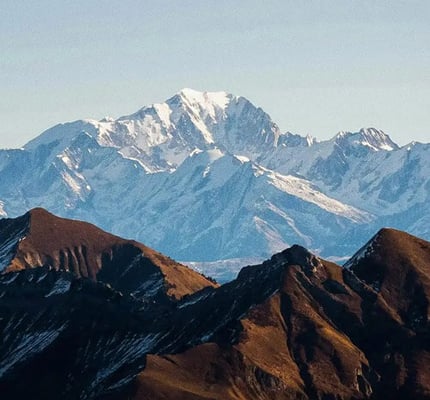Lightfoot Travel
WhatsApp Business Account
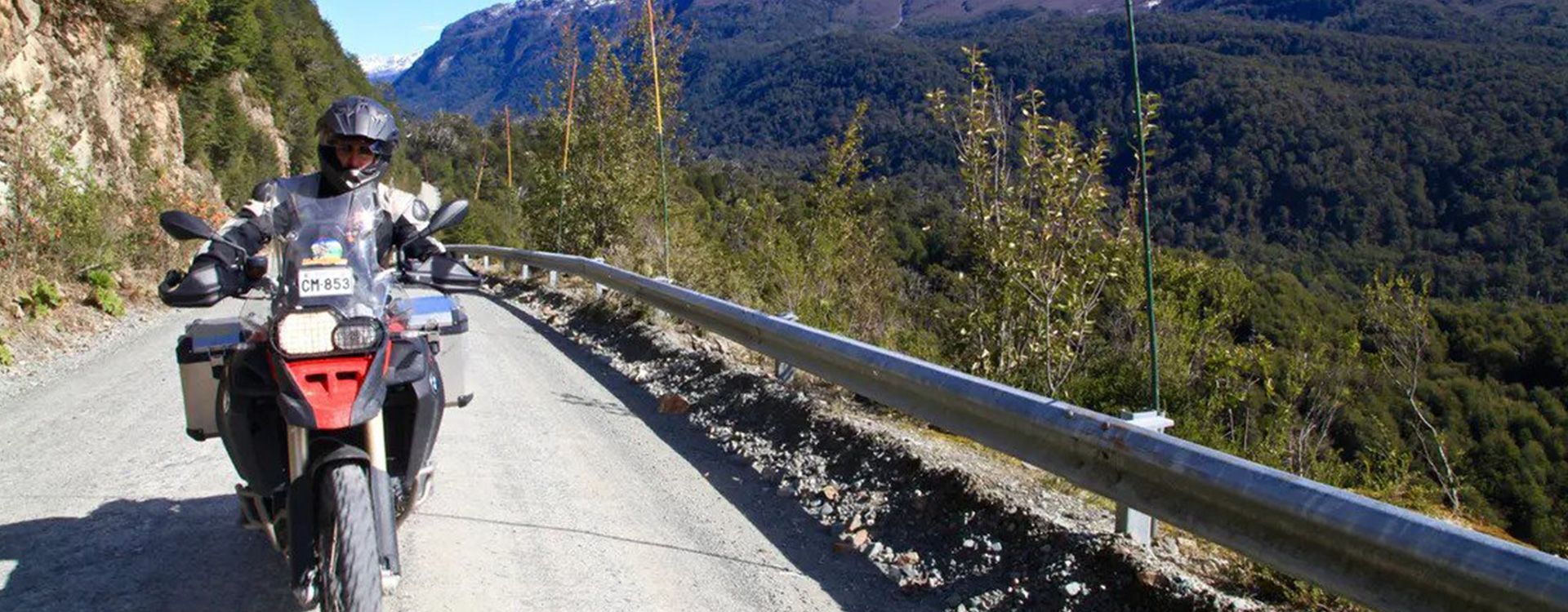
“The place you are going is la pacha mama (mother nature) – the purest in the world,” says the lady who hands me the keys to a big fat German motorcycle at the BMW dealership in Osorno, a city in southern Chile.
The place she speaks of is Patagonia: a rugged, sparsely populated rift of flooded fjords, valleys, mountains, massifs, glaciers, ice fields, rainforests, marshlands and high coastal cliffs that starts south of Osorno and continues all the way to the tip of mainland South America in neighbouring Argentina. And the road that’s going to take me there is the Austral Highway, AKA ‘the road after the end of the road’ because it starts near to the point where the Panamerican Highway ends.
Some 1,240km in length, the Austral Highway was built by the Chilean military in the 1970s to counter Argentinean encroachment into the Chilean side of Patagonia. The terrain is so unforgiving it took the army 10 years to build a gravel version of the road, while attempts to pave it from end-to-end continue to this day. And some of the fjords that bypass the Austral are so wide and rise so steeply from the sea that they were impossible to bridge. So engineers hatched a Plan B: fleets of fast and modern vehicle ferries, the first of which I come across at Punto Arenas at the Austral’s 50km mark. A few minutes after I arrive, so does a ferry, and I’m waved on board for a swift albeit rocky crossing to the other side.
At dusk, I arrive at Hornopirén, the departure point for the second ferry – a four-hour 60km long crossing. Originally, I’d planned to spend the night here. But when I reach the terminal I learn rough seas had prevented the vessel from docking until moments ago, and some travellers had been waiting two days to cross. Not wanting to suffer the same fate, I buy a ticket and hop aboard.
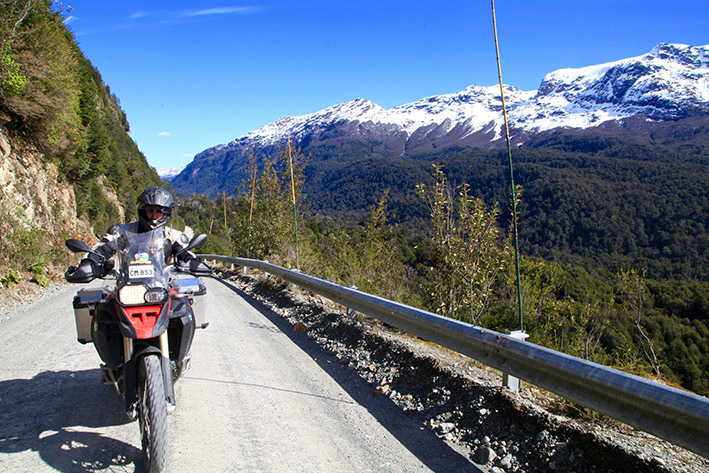
It’s midnight and raining heavily when I disembark on the bank of an epic fjord marking the border if Pumalin National Park – Chile’s home of the puma. With the park, the office is closed. I have no option but to pitch my tent where I stand and hope the big cats don’t visit me in the night.
Another day and morning pass before the rain clears and a rainbow appears over the fjord – a sign, if I ever saw one, to ride like the wind. I spend the rest of the day charging along a muddy track bordered by 3,000-year-old Alcerces hardwood trees and giant sub-tropical ferns. The mist comes and goes like spirits, exposing heavily forested hills, ridges and distant peaks. Condors fly overhead in slow, concentric circles. Waterfalls kiss the road.
At nightfall, I reach Chaitén, a coal-mining town cut straight out of spaghetti Western with Spanish subtitled. Ten years ago, Mount Chaitén, a nearby strata-volcano, erupted for the first time in 9,500 years and sent lava gushing through the main street, obliterating half the town. Few permanent structures have been built since, as though the locals can’t be bothered in case the volcano erupts again. After stopping off at a shabby wooden store for some piping hot empanadas (handmade meat and onion pies), I zoom into history.
Towns and villages become fewer and further in between. The next, Puyuhuapi, looks like it belongs in the Swiss Alps – a sheltered waterfront town with A-frame houses founded in the 19th-century by German immigrants. My guidebook tells me a massive glacier literally hangs between a gap in the mountains a few hours walk from here – a “must do” for travellers on the Austral Highway. But I have no time for such trivialities. In Patagonia, they say “if you hurry, you lose time”, but I simply can’t restrain myself.
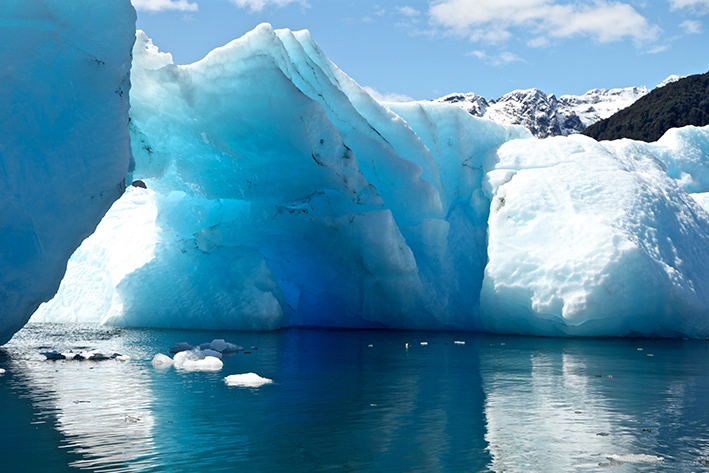
Faster and faster I go. I take on wide sweeping corners and punch my BMW into high gear on long desolate straights. Everywhere I look I see something awesome: glaciers as large as shopping centres inching down mountainsides; granite cliffs so high they challenge the heavens; raging rivers where salmon fly; and more waterfalls than anyone could count. It’s hard to believe a place as beautiful as this actually exists.
On day five I reach Coyhaique, the southernmost city in Chile, for a much-needed night in a warm bed. After taking off the next morning I see snow on the roadside – at first a few patches here and then more and more of it until I find myself immersed in a winter wonderland where once-distant mountains now kiss the road. Somewhere among all this epic-ness, I hit a tight series of switchback takes me up a 1,000m mountain pass – the highest point on the Austral. There I’m rewarded with the awesome sight of Cero Castillo (Castle Mountain), a 2,700m high massif with spires that jut out of its summit, like watchtowers hewn by sorcerers from solid stone.
The further south I ride, the bigger the mountains become layers of folded rock so astronomical in size and scale and so relentless in their beauty that attempting to describe them becomes an act of futility. And just when I think it can’t get any better, I hit the cliff-lined shores of Lago General Carerra, the second largest lake in South America. They say the water is turquoise in colour, but it’s so much ‘bluer’ than that – electric blue, perhaps – and the thing is so damn big I can’t see the other side.
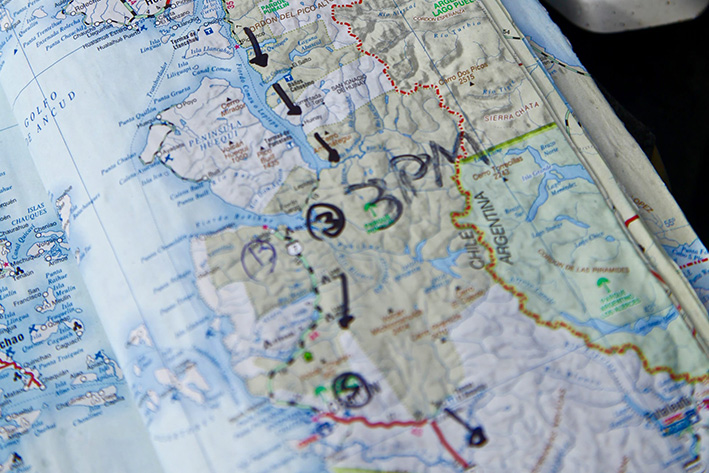
At the village of Rio Tranquilo, I fill up with fuel buy some empanadas for my final run of the day – a riot of switchbacks and giddy turns atop cliffs that spits me onto a natural land bridge crossing the thinnest section of the lake.
From here the Austral continues south for 250km to its nadir at Villa O’Higgins. But I detour east for 50km to a biker-friendly lodge near the village of Puerto Guadal. There are no vacancies, but the manager accommodates me in a little red houseboat that has its own little bathroom and fireplace inside. After a long hot shower, I sit on the deck and munch on my empanadas and swinging a bottle of Chilean wine. The sun, a burning planet, sets over a sawtooth ridge, turning the surface of the lake from blue, to pink, to orange, before settling on a light shade of red. After nearly a week on the road after the end of the road, I’ve found that place in space-time where I no longer need to ride, no longer need to hurry, no longer need to go anywhere at all.
Auckland & Waiheke IslandLake Taupo & RotoruaNapier & Hawkes BayFiji
Auckland & Waiheke IslandLake Taupo & RotoruaQueenstown, Milford Sound & Southern LakesWellington & WairarapaFranz Josef & the West CoastNew ZealandAustralasia
